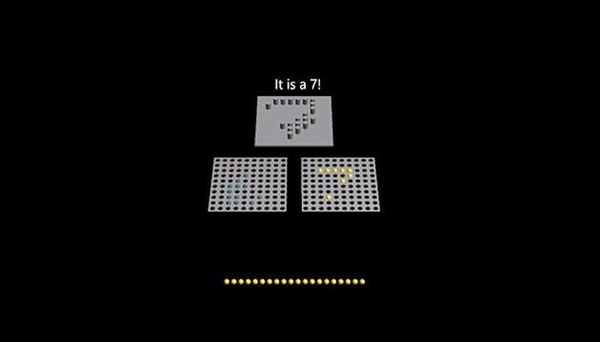Scientists in the laboratory of Caltech have developed an artificial neural network made entirely of DNA, which can mimic the work of the brain to form its own “memory.” This artificial intelligence system in a test tube solves typical machine learning problems by recognizing handwritten numbers. Scientists say the work is an important step in confirming the implantation of artificial intelligence into artificial organic circuits. This means that one day, we will successfully develop humanoid robots made entirely of organic materials, rather than the metal robots that are currently recognized by the public. Researchers hope that the device will soon form its own “memory.”
Their ultimate goal is to program intelligent behaviors, such as the ability to make calculations and make choices, and more activities. The core of the process is an artificial neural network made of DNA. Experts from the California Institute of Technology are challenging to design electronic artificial neural networks—identifying human handwriting.
This is one of the top priorities for robot vision researchers and an ideal way to demonstrate DNA-based neural network capabilities. There are big differences between human writings, so when a person scrutinizes a sequence of scribble numbers, the brain performs complex computational tasks to identify them.

Because even humans can hardly identify other people’s scribbles, recognizing handwritten numbers is a common test for designing intelligent programming into artificial intelligence neural networks. The network must “teach” how to identify numbers, explain the process of handwriting changes, and then compare an unknown number with what they call memory, and finally verify the number of scribbled.
Currently, the research team has confirmed that a neural network composed of well-designed DNA sequences can perform chemical reactions, indicating that it can correctly identify “molecular handwriting.” When given an unknown number of weeds, this so-called “smart soup” will perform a series of reactions and output two fluorescent signals. For example: green and yellow represent the number 5, or green and red represent the number 9.
Qian Lulu, a researcher and professor of bioengineering, said: “Although scientists have just begun to explore artificial intelligence systems in molecular machines, their potential is undeniable.” Similar to the emergence of electronic computers and smartphones. The contribution of human science and technology advancement, artificial molecular machines can produce all molecules, even pigments and bandages, I believe that in the next 100 years, the technology will develop more space and protect the earth’s ecological environment.
Unlike geometric forms of geometric writing, each molecular handwriting instance does not actually have a digital structure. Instead, each molecular sequence consists of 20 unique DNA strands that are selected from 100 molecules, each of which is assigned to represent a single pixel. These DNA strands are mixed together in a test tube. Given a particular example of molecular writing, DNA neural networks can classify them into nine categories, each of which represents one of nine possible handwritten digits from 1-9.
First, the research team built a DNA neural network to distinguish between handwritten 6 and 7, after which they tested 36 handwritten digits and a test tube neural network to correctly identify all of these numbers. In theory, the system has the ability to distinguish between 12,000 handwritten 6 and 7 digit recognition, 90% of which are derived from machine-readable handwritten digit databases.

The identification process is crucial to using DNA molecules to encode a “winner-take-all” competitive strategy. In this strategy, when determining the true identity of an unknown number, a special type of DNA molecule called the “annihilator” is used to select the “winner.”
The “annihilator” DNA molecules form a complex in which one molecule comes from one competitor and the other from different competitors, and the two react to form an inert, unreactive complex species. The “Destroyer” will soon be able to eat all the competitors, leaving only one competitor. The winning competitor then recovers to a high concentration and produces a fluorescent signal indicating the decision of the artificial intelligence network.
Next, the team developed a more complex neural network based on their first DNA neural network principle, which can distinguish between 1-9 numbers. Currently, the research team plans to design an artificial neural network that can learn to form “memory” from instances added to the test tube. They point out that in this way, the same “smart soup” can be used to accomplish different tasks. The details of the research report were published in the recently published journal Nature.

Related Posts
AirGo Vision- Solos’ Smart Glasses with AI Integration from ChatGPT, Gemini, and Claude
Rise of deepfake technology. How is it impacting society?
OpenAI’s Critic GPT- The New Standard for GPT- 4 Evaluation and Improvement
Claude 3.5 Takes the Lead- Why It’s Better Than GPT-4
Smartphone Apps Get Smarter- Meta AI’s Integration Across Popular Platforms
Free PDF Analysis Made Easy with ChatGPT